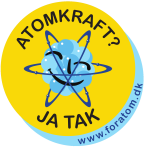Chernobyl Exclusion Zone – Europe’s 3rd largest nature reserve.The UN has followed the area for more than 30 years. Their findings were summarized in 2016 by EU researchers [1]:
“After the environmental stress caused by radiation, ecosystems close to Chernobyl have recovered and are now ‘blooming’. It concludes that the exclusion zone has become a ‘wildlife sanctuary’ as a result of the great availability of food and the absence of human activity.”
The European Radioecology Alliance describes the exclusion zone as follows [2]:
” The area is rich in species with more than 400 species of vertebrates, including 67 fish, 11 amphibians, 7 reptiles, 251 birds, and 73 mammals; many are listed in Ukrainian and European Red Books.”
The Chernobyl Exclusion Zone is the third largest nature reserve in Europe. It is now home to European bison and Przewalski’s horses, previously rare species introduced to the area after the accident to help with their conservation. Lynx, wolves, bison, and deer thrive in their forests [3]. It is considered a World Heritage Site by UNESCO [4].
Conclusion:
The narrative of Chernobyl as a desolate, uninhabitable area, ravaged by radiation is completely wrong.
The striking conclusion is that the world’s worst nuclear accident is much less destructive to animals and plants than normal human activities. Due to the removal of human activities, the exclusion zone has become a unique sanctuary for biodiversity and wildlife, which thrive much better today than before the accident in the area.
Sources:
- https://www.unep.org/news-and-stories/story/how-chernobyl-has-become-unexpected-haven-wildlife
- http://www-ns.iaea.org/downloads/rw/meetings/environ-consequences-report-wm-08.05.pdf
- https://radioecology-exchange.org/content/chernobyl-exclusion-zone
- https://www.wired.com/story/chernobyl-exclusion-zone-rewilding/
- https://whc.unesco.org/en/criteria/




